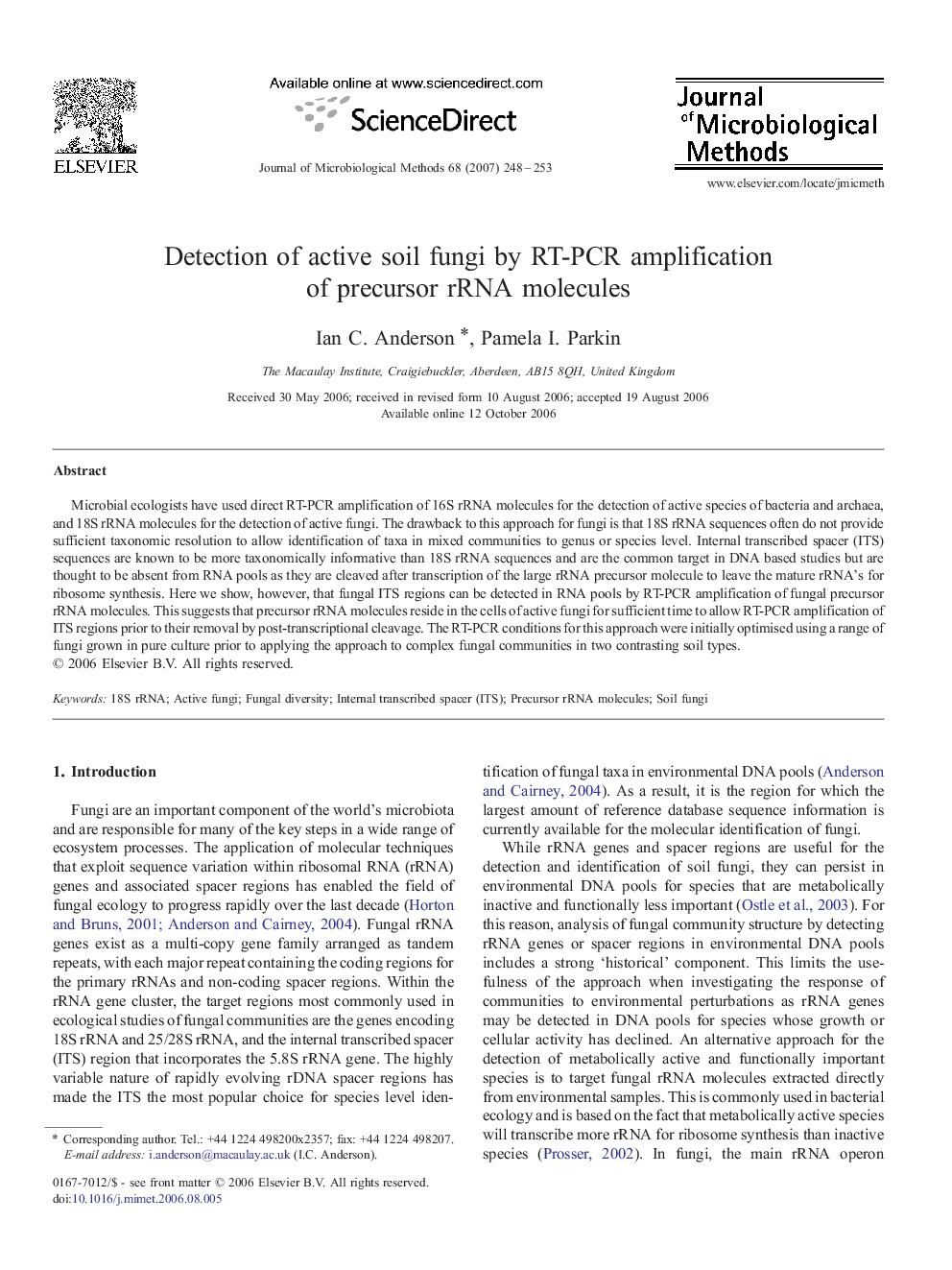| Article ID | Journal | Published Year | Pages | File Type |
|---|---|---|---|---|
| 2091311 | Journal of Microbiological Methods | 2007 | 6 Pages |
Microbial ecologists have used direct RT-PCR amplification of 16S rRNA molecules for the detection of active species of bacteria and archaea, and 18S rRNA molecules for the detection of active fungi. The drawback to this approach for fungi is that 18S rRNA sequences often do not provide sufficient taxonomic resolution to allow identification of taxa in mixed communities to genus or species level. Internal transcribed spacer (ITS) sequences are known to be more taxonomically informative than 18S rRNA sequences and are the common target in DNA based studies but are thought to be absent from RNA pools as they are cleaved after transcription of the large rRNA precursor molecule to leave the mature rRNA's for ribosome synthesis. Here we show, however, that fungal ITS regions can be detected in RNA pools by RT-PCR amplification of fungal precursor rRNA molecules. This suggests that precursor rRNA molecules reside in the cells of active fungi for sufficient time to allow RT-PCR amplification of ITS regions prior to their removal by post-transcriptional cleavage. The RT-PCR conditions for this approach were initially optimised using a range of fungi grown in pure culture prior to applying the approach to complex fungal communities in two contrasting soil types.
